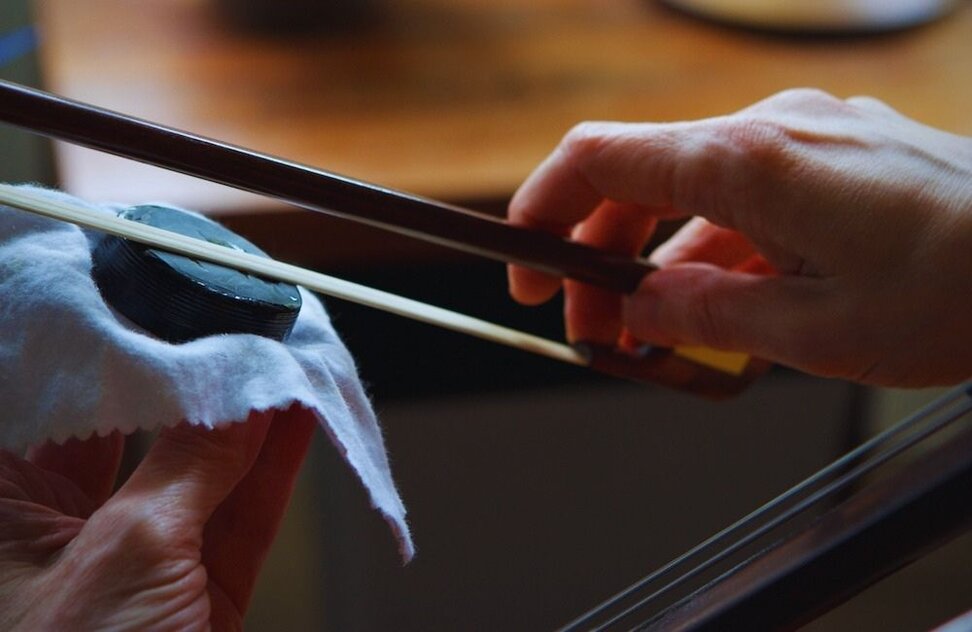A violin sometimes known as a fiddle is a wooden chordophone, a string musical instrument that comes in various nomenclature and classification from the very beginning of its origin. The classification differs in size, shape, makes, and models. The main types of violins are viola, violin, cello, and double bass.
One of the very distinguished types of violin other than those main four in the family of stringed instruments is ‘Stradivarius’ violins. Stradivarius was made by Antonio Stradivari during the 17th and 18th centuries, one of the members of the Italian family Stradivari. Antonio was a famous instrument maker of his time in the Northern Italian city of Cremona who was born around 1644 and indulged himself in the obsession of making violins. While making the best out of the ingredients, the most unique and innovative, the Stradivarius violin was born among the stringed family.
What is a Stradivarius
The name Stradivarius was developed by Antonio Stradivari, the maker of the stringed family instrument. The sound of a Stradivarius is undefined, and there’s no stringed instrument at the same level as Stradivarius on making a deep sombre sound. Antonio Stradivari at the end of the 17th century after the birth of violins tried to defy the standard sound by making experiments, making the bodies of violins shallower than the normal shape of the violin and redesigning the bridge, the small pieces of wood that props up the strings and made proportionally as a standard one.
Undoubtedly the Stradivarius violins are the best violins ever made among the whole stringed instrument family, though some of the instrument-making organization marks them as ‘Overrated’ violins while discussing the worth. But the violinists and musicians who have played it have praised this for its rich and ominous sound. The transition from the lowest to the highest tones while noting produces some quality notes and the sound is as clear as crystal. Distance is also not a factor for hearing. Even the slightest touch of the Stradivarius violins is soothing to the ear.
How many Stradivarius violins are there?
Antonio Stradivari didn’t only make violins, his making includes guitars, violas, harps, and cellos. The total number of instruments he has made is around 1100 on current estimation though it’s not sure. Among them, 650 Stradivarius string family instruments survive to date. Out of that 640, 244 are Stradivarius violins still in existence. Copying the model of Stradivari many more violins are made over time on the modern generation of violins. Those copy violins are labelled as Stradivarius label, a type of violin which is not a genuine Stradivarius violin or surely not an original one.
Ernest Doning in his book named ‘How many strands mentioned the total number of Stradivarius in existence back in 1945. In his book, he tabulated there are some 12 violas, 51 cellos, and 450 violins. Until then more than 50 plus violins made by Antonio Stradivari were discovered with a few cellos.
How to identify a Stradivarius?
The label
Check the label of the Stradivarius, there you’ll be able to discover parts of violins that have the composing “Antonius Stradivarius Cremonenfis” on their name, but a tremendous which were made in regards as a tribute to Antonio Stradivari in the modern era. An original Stradivarius is made from Italy but a number of them are copies of the initial instrument which even go as distant as composing where they have been made, in Germany or Austria and many others of Europe.
All the original Stradivarius violins are confronted with roman font, so take the liberty to check it out. Except for the roman font, any other font means the instrument is not a genuine one. Also, everybody knows the fact that Stradivari lived in between the period of 1644-1737, so labels should be of an older date, other than that means another fake Stradivarius.
The wood
The most unique part that makes the Stradivarius different and great from other standard violins is the wood. Most of the Stradivarius violins are made from the same tree. Western violins or stringed instruments are made of spruce-type wood. Comparing the unique patterns of the wood will guide you to understand an original or fake Stradivarius violin. Measuring the age of the wood is also very much effective as the Stradivarius violins were made in the 17th century.
The sound
The sound of a Stradivarius is magnificent and on a whole other level than a standard stringed instrument with a deep and mellow sound. The sound of the Stradivarius is rich and resonant no matter how you set the note of the violin to play, higher or lower. Compared to other violins the sound has less surface noise and a strong core. Sound is the easiest way to differentiate between the original and fake Stradivarius.
Varnish
Checking the varnish of the instrument, or maybe even taking a test of it and have it analyzed is another good method to identify the original Stradivarius. Numerous violins were made in that time, all of the string family instruments were made from a complex mix that’s utilized as varnish but incase of the Stradivarius violins the varnish was secured in a basic coating made of oil and resin context.
Worth of a Stradivarius violin
‘Messiah Stradivarius’ turns out to be the most expensive violin in the whole world compared to all other Stradivarius violins. The current worth of the stringed family instrument is nearly $20,000,000. All the Stradivarius violins that are labeled as original or genuine are worth a million at least. One of the biggest reasons why they are of this much price is the sound, even the modern violin era failed to provide as profound and rich sound as possible even near to the Stradivarius. To violinists playing and the audience ear, the sound of a Stradivarius violin is heavenly without any arguments.
Some other Stradivarius violins like ‘Molitor Stradivarius’ owned by Napoleon were sold in 2010 at the price of $3.6 million. ‘Lady Blunt’, another famous Stradivarius was sold at the price of $15.9 million in 2011.
A shortlist of Stradivarius with their provenance
Ex-Sachs (1666): Madame Sachs
Dubois (1667): Canimex Inc.
Aranyi (1667): Francis Aranyi (collector)
Ex-Captain Saville (1667): Jean-Baptiste Vuilaume Captain Saville
Amatese (1668): Anonymous
Clisbee (1669): Mrs. Clisbee
Oistrakh (1671): Queen Elizabeth of Belgium (Glinka Museum, Moscow)
Sellière (1672): Charles IV of Spain
Spanish ex-Faltin (1678): Finnish Cultural Foundation
Paganini-Desaint (1680): Nippon Music Foundation
Cipriani Potter (1683): Cipriani Potter
Ex-Croall (1684): WestLB
The Marquis (1685): Marchese Spinola, Mark Kaplan
Ex-Arma Senkrah (1685): The Ruggeri – Stiftung
Ex-Natchez (1686): Dr. Winfred and Mr. John Constable
Rosenheim (1686): William Rosenheim
Goddard (1686): Miss Goddard; Antonio Fortunato




